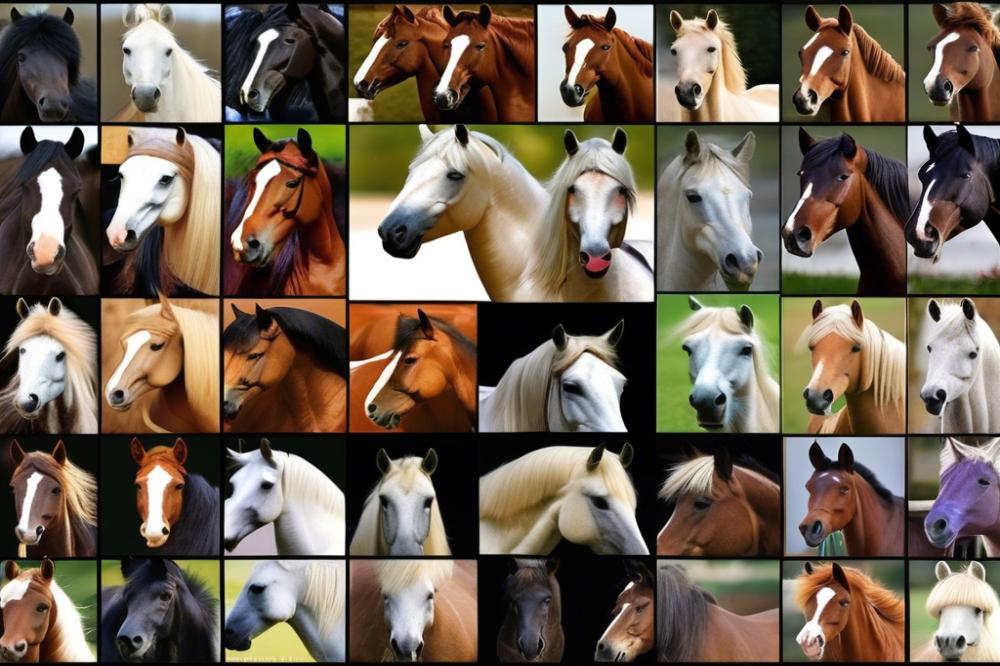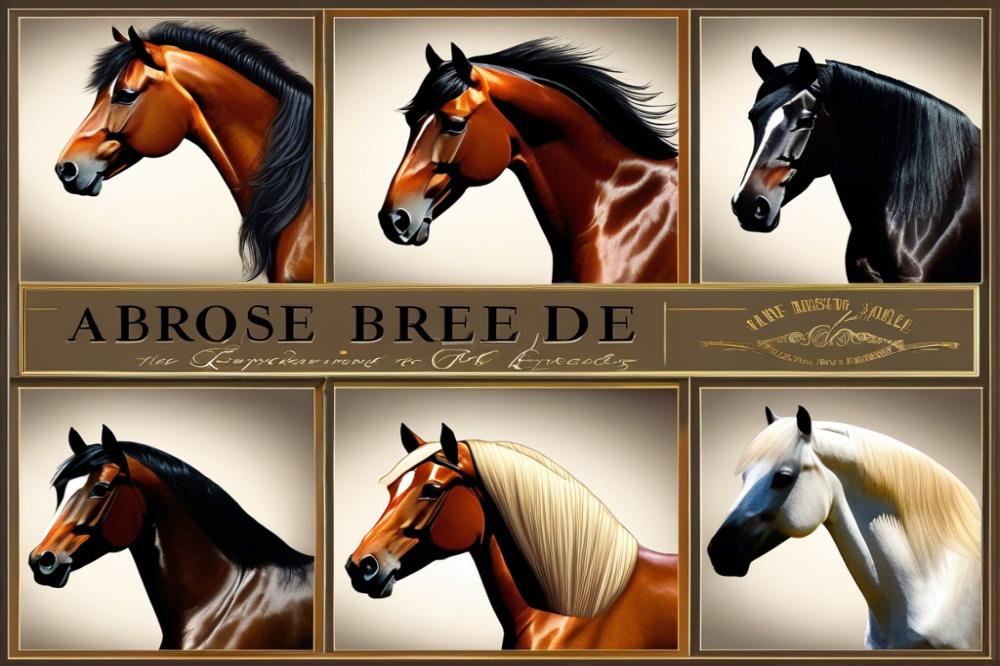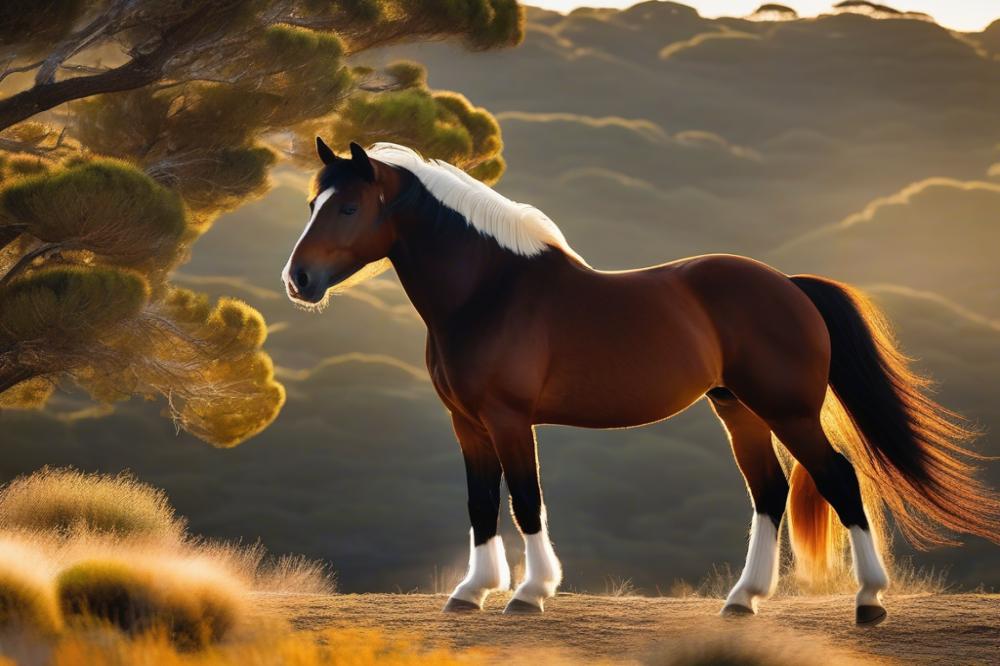Rare and Remarkable: The Hardest-to-Find Horse Breeds in Existence
Horses have been part of human history for thousands of years. They play significant roles in various cultures around the world. Some serve as work animals, while others are cherished companions. The variety of horse breeds showcases their incredible versatility. Breeds differ in appearance, temperament, and ability. Each type holds its own special place in the equine community.
Rarity adds a unique layer to the world of horses. A rare horse breed is one that has a small population or is not commonly seen. These breeds often face challenges like limited breeding programs and lack of public awareness. This lack of visibility makes them intriguing. Enthusiasts and breeders alike seek to preserve these extraordinary animals. As a result, hard-to-find horses often become symbols of conservation efforts.
Uncommon equine varieties bring a sense of wonder. They often have distinct characteristics that set them apart from more familiar breeds. For instance, some may possess unusual coloring, while others may excel in specific tasks. Understanding these breeds can lead to a deeper appreciation of horse diversity. Their existence highlights the importance of genetic variation in ensuring healthy populations. Furthermore, these animals tell stories of tradition, culture, and perseverance.
Understanding rare horse breeds

What makes a horse breed rare? Typically, a breed is considered rare when its population is low enough to threaten its survival. These horses often have special characteristics, like unique physical traits or temperaments. The decline in numbers can happen for various reasons, such as changing farming practices, a shift in market demand, or even environmental challenges.
Historically, many horse breeds have faced peril. Over the centuries, wars, industrialization, and changing rural lifestyles have led to the extinction of countless breeds. Some horses once roamed freely or served critical functions on farms and in transport. As societies evolved, these valuable animals were sometimes neglected. Other factors like crossbreeding have further complicated their survival. Today, organizations and enthusiasts work hard to protect these breeds from disappearing forever.
Classifications of Horse Breeds
Horse breeds can be categorized in a few different ways. Heritage breeds are those that have deep historical roots, often cherished for their cultural significance. Exotic breeds come from far-off places and often have distinct features. unique equine breeds stand out due to their rarity, looks, or particular abilities. Understanding these classifications helps horse lovers appreciate the diversity of equines around the globe.
Each classification tells a story. Heritage breeds link us to our past, offering a glimpse into how humans and horses have worked together through the ages. Exotic breeds often capture the imagination with their unusual appearances and abilities. Those rare types remind us of the beauty in diversity and the importance of preservation.
Notable rare horse breeds

Many breeds of horses are on the brink of extinction. They often have fascinating histories and striking characteristics. One such breed is the Dales Pony, hailing from northern England. This sturdy pony features a thick mane and feathering on its legs. Traditionally, they were used as pack horses in the rugged Dales region. Although they were once common, their numbers have dwindled significantly.
The Suffolk Punch is another breed that deserves attention. This powerful draft horse originated in Suffolk, England. Known for their chestnut color, these horses are muscular and hard-working. They played a vital role in farming, pulling heavy loads and plowing fields. Today, they face the challenge of reduced demand and fewer breeders.
Endangered Horse Breeds and Their Characteristics
Some breeds are critically endangered. The Cleveland Bay, for instance, is one of the rarest. This horse is famous for its solid black or bay coat and excels in versatility. Originally bred for both riding and driving, they possess a gentle disposition. Modern times have seen their popularity decline, leading to a very limited gene pool.
Similarly, the Eriskay Pony is threatened. This breed, native to the Scottish Hebrides, is small and hardy. Their adaptability to harsh climates makes them special. Though they were once used for work on farms, they are now mostly kept for conservation efforts. Breeders aim to preserve their unique traits and beauty.
Historical and Heritage Breeds: Origins and Current Status
Several heritage breeds have rich backgrounds. The Spanish Barb is an ancient breed that traces its lineage back to the horses brought by the Moors. They are compact and agile, known for their endurance. Today, they are cherished more for their historical significance than for utility.
The Hackney Pony is another breed with deep roots. Originating in England, these ponies are celebrated for their spirited nature and elegance in harness competition. Once abundant, their numbers have drastically declined over the decades. Preservation efforts are under way to honor their legacy.
Strong connections to the past characterize the Caspian breed as well. Thought to be one of the oldest horse breeds, it is small but mighty. Originating near the Caspian Sea, they are versatile and excel in various disciplines. Despite their historical importance, they are facing a fight against extinction.
Challenges in Horse Breeding and Conservation
Breeding rare horse species presents numerous difficulties. Limited genetic diversity often becomes a major hurdle. Many populations are small, making inbreeding a constant concern. This can lead to health issues and less vitality in the horses. Environmental factors also play a crucial role. Habitat loss and changing climates impact their ability to thrive.
Conservation efforts for endangered horses don’t just happen overnight. Many organizations work tirelessly to protect these breeds. Some focus on breeding programs to improve genetic variety. Others aim to create safe environments where horses can live freely. Education about the importance of these species is equally important. Raising awareness can lead to more funding and support from the community.
Various groups play a significant role in preserving these majestic creatures. The World Horse Welfare and other similar organizations dedicate resources to help endangered breeds. They provide grants for research and conservation projects. By collaborating with local communities, they create programs tailored to specific needs. These collaborative efforts can lead to lasting change, benefiting both the horses and the environments they inhabit.
Without such interventions, many unique breeds could vanish completely. Upholding their legacy requires dedication and passion from everyone involved. The commitment of organizations and individuals is vital for the future of these remarkable animals.
The Importance of Preservation
Preserving rare horse breeds carries both ecological and cultural significance. These animals represent a link to our past. Many breeds have roots in specific regions, showcasing local traditions and practices. Losing them means losing part of our heritage. Each breed contributes to local identities and histories, serving as symbols of cultural pride.
Genetic diversity is vital for the horse population as a whole. Rare breeds bring unique genetic traits. These traits can help improve resilience against diseases and adapt to changing environments. Their diversity plays a crucial role in the health of all equines. If we lose these genetics, we may face difficulties in breeding and maintaining robust horse populations.
Conservation efforts have yielded inspiring results. Groups around the world have taken action to protect these lesser-known breeds. They focus on breeding programs, education, and awareness campaigns. Raising public knowledge about the value of such horses is essential. Through these initiatives, some breeds have bounced back from near extinction.
Not only do preservation efforts benefit the horses themselves, but they also support farming and rural communities. Engaging with these animals can strengthen community ties and enhance local economies. Whether through tourism or traditional practices, rare horses can be a source of income and pride.
The task of preserving these species is not just about saving a few animals. It’s about maintaining a legacy for future generations. The stories and traditions surrounding these horses shape our understanding of the world. By valuing and protecting them, we enrich our lives and the environment we inhabit.
Preserving the Legacy of Rare Horse Breeds
Rare horse breeds hold significant historical and cultural value. They are not just animals; they represent stories, traditions, and practices that have spanned generations. Many of these unique equine breeds face the threat of extinction, but their legacy can still endure if people take action now. These horses provide insights into our shared history with nature and help to diversify the genetic pool necessary for future breeding.
Support for horse breed conservation is vital. Organizations and enthusiasts work tirelessly to protect these animals and their habitats. Everyone has a role to play. By promoting awareness and participating in conservation efforts, you can help to ensure that future generations will still have the chance to connect with these magnificent creatures. It is not merely the responsibility of breeders and organizations; everyone can contribute to this important cause.
Thoughts about the future of endangered horses often stir concern among animal lovers. Proactive steps can still be taken to safeguard their existence. Educating oneself about these breeds enables better protection strategies. As awareness grows, so does potential support for breeding programs and sanctuaries that prioritize the preservation of these horses.
In conclusion, remember the vital role that rare horse breeds play in our world. They enrich our lives in ways that go beyond mere appearances. Support their conservation to keep their histories alive and flourishing. Every small action counts in the fight against extinction. Let us work together to create a future where these remarkable horses continue to thrive.



